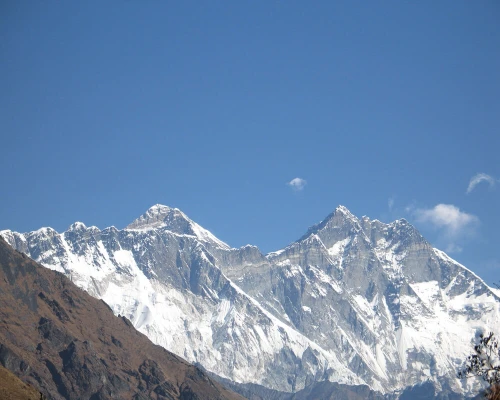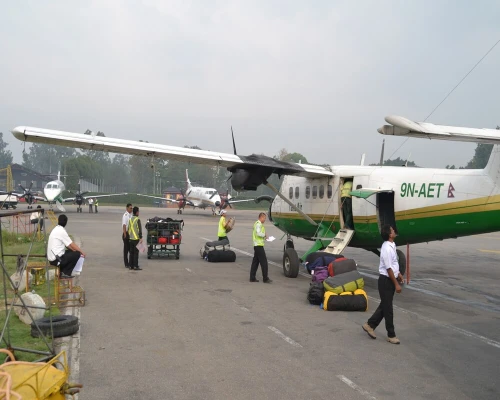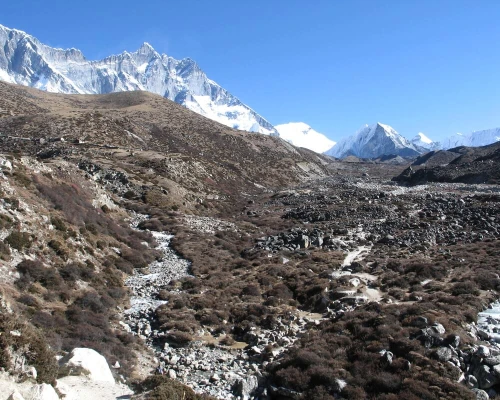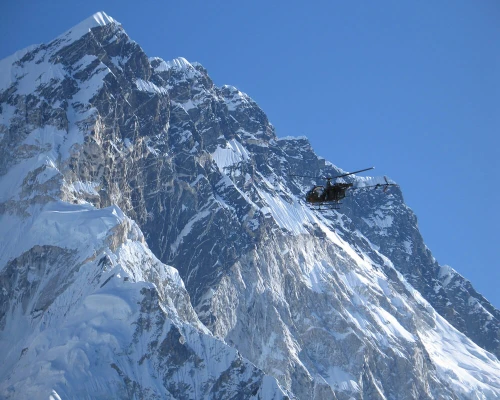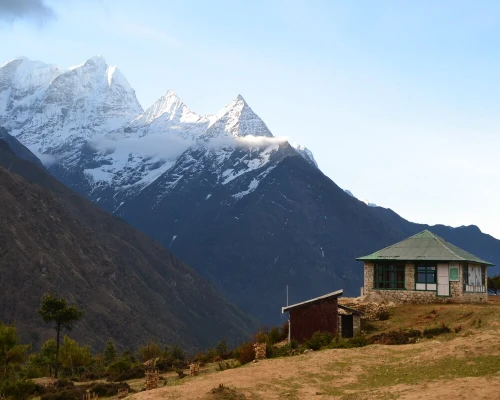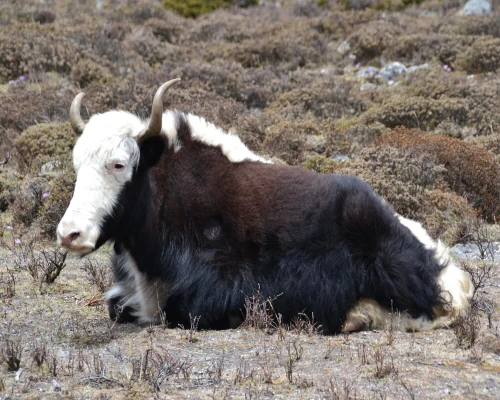The Everest Base Camp Short Trek is a cultural and scenic journey, offering a taste of Sherpa culture and Buddhism. It covers highlights such as Namche Bazaar, Sagarmatha National Park, Kala Patthar Viewpoint, and Everest Base Camp. Tengboche Monastery and stunning mountain views are also part of the experience. The trek begins with a flight to Lukla and requires good fitness and prior high-altitude experience. This 10-day trek is designed for those with limited time but still provides a fulfilling adventure.
The mountain is either narrated or you can figure it out just from inner body language
- The Sherpa culture is an integral part of the Everest region, characterized by its unique lifestyle and traditions. Trekking through the area allows visitors to immerse themselves in the Sherpa community's way of life and witness their deep-rooted Buddhist beliefs. The region is home to serene and peaceful monasteries, including the renowned Tengboche Monastery, where visitors can experience the spiritual ambiance and observe the rituals and practices of the Sherpa people.
- One of the main highlights of the Everest Base Camp Trek is the awe-inspiring views of the world's highest peak, Mount Everest, towering at an impressive height of 8,848 meters. Along with Everest, trekkers are treated to breathtaking vistas of other majestic peaks, such as Lhotse (8,516m), Makalu (8,463m), and Cho Oyu (8,201m), creating a stunning backdrop throughout the journey.
- The region also boasts a wide range of highland flora and fauna, adding to its natural beauty. Trekking through the area provides opportunities to witness the pristine Khumbu Glacier, and marvel at the unique wildlife, including elusive creatures like snow leopards, musk deer, and the colorful Himalayan Monal, known for its vibrant plumage.
- Reaching the summit of Kala Patthar at 5,555 meters offers trekkers a panoramic view that is truly unforgettable. From this vantage point, the entire Everest region unfolds before their eyes, revealing a stunning panorama of the surrounding peaks and valleys.
- Furthermore, the trek also introduces travelers to Syangboche, home to one of the world's highest airports, providing a unique perspective on the challenges and logistics of transportation in this remote mountainous region.
- In summary, the Everest Base Camp Trek offers a remarkable journey filled with cultural immersion, breathtaking mountain views, diverse flora and fauna, and a profound connection with nature. It is an experience that combines the exploration of Sherpa culture, the exploration of nature's wonders, and the personal accomplishment of reaching the iconic Everest Base Camp Short Trek
Lukla Everest Base Camp Short Trek
The Mount Everest Base Camp trek is a thrilling adventure for serious trekkers seeking both challenge and solitude. The region is renowned for its impressive peaks, including Mount Everest, Lhotse, and Nuptse. The journey begins with a flight to Lukla, followed by a hike to Phakding and Namche Bazaar. Along the way, you'll experience stunning landscapes, cross suspension bridges, and encounter religious landmarks like Mane Stones and Chortens. Tengboche Monastery offers a serene and spiritual atmosphere, while Dingboche provides breathtaking views. The trek culminates at Everest Base Camp, followed by an ascent to Kala Patthar for sunrise views. The descent includes stops at Pheriche and Namche Bazaar before returning to Lukla. The trip concludes with a reflective flight back to Kathmandu.
Best Time for Everest Base Camp Short Trek
The best time to embark on a short Everest Base Camp trek is during the Autumn and Spring seasons in Nepal. The Autumn months of September, October, and November offer clear skies, excellent visibility, and stunning mountain views. The weather is generally dry and stable, allowing trekkers to enjoy the spectacular vistas of the Himalayas without haze or clouds. Additionally, the autumn season showcases the vibrant colors of blooming rhododendron flowers, enhancing the overall trekking experience in the Khumbu region.
Similarly, the Spring months of March, April, and May are another favorable time for the short Everest Base Camp trek. The weather during this period is generally dry, with mild temperatures and less chance of rainfall. The mountains are adorned with blossoming flowers and lush vegetation, creating a picturesque setting along the trekking trail.
While it is possible to trek during the winter months of December, January, and February, it is important to note that the weather can be extremely cold, especially at higher altitudes. The temperatures can drop as low as -30 degrees Celsius at night, and snowfalls can make the trail slippery and more challenging. Therefore, winter treks require proper cold-weather gear and a higher level of preparedness.
On the other hand, the monsoon season from June to August is not recommended for a short Everest Base Camp trek. During these months, the weather in the Everest region experiences significant changes, with a high chance of rainfall and snowfall. The trails become muddy and slippery, and there is a possibility of flight cancellations to and from Lukla due to adverse weather conditions.
Considering the weather conditions, temperature, visibility, and overall ease of the trek, the Autumn and Spring seasons are considered the best time to undertake a short Everest Base Camp trek. These seasons offer the most favorable conditions for a memorable and enjoyable trekking experience in the Everest region.
Everest Base Camp Short Trek Difficulty
The Mount Everest Base Camp Short trek, which typically takes 10 days to complete, is considered a moderate to difficult trek. The difficulty level is influenced by several factors, including your physical fitness, the duration of the trek, the chosen route, and the season in which you undertake the journey.
Covering a distance of approximately 120km from Lukla to Everest Base Camp and back, you can expect to walk for an average of 4 to 7 hours per day over a period of 9 days. The terrain varies, with sections that are rocky as well as some flat areas along the route.
One of the main challenges of the Everest Base Camp trek is the high altitude. The trek reaches its highest point at Kala Patthar, which stands at an elevation of 5,644m/18,519ft. As you ascend above 3,000m/9,842ft, the oxygen levels gradually decrease, increasing the risk of altitude sickness. Symptoms such as headaches, vomiting, and nausea can occur when the body struggles to adapt to the change in air pressure. It's important to note that this short itinerary does not include dedicated acclimatization or rest days, so previous trekking experience is generally recommended.
To minimize difficulties during the trek, it is advisable to engage in regular exercise and maintain good physical fitness prior to embarking on the journey. It is also crucial to follow the recommended itinerary and the guidance of experienced guides. By doing so, you can help prevent and manage any potential challenges that may arise during the trek.
In summary, the Mount Everest Base Camp Short Trek is a moderate to difficult adventure that requires careful consideration of factors such as physical fitness, trek duration, route selection, and the season in which you plan to undertake the journey. With proper preparation, including exercise, maintaining physical fitness, and adhering to the itinerary and guidance provided, you can enhance your chances of a successful and enjoyable trekking experience.



